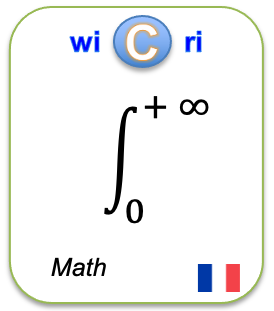The Bruhat order on symmetric varieties
Identifieur interne : 002222 ( Main/Merge ); précédent : 002221; suivant : 002223The Bruhat order on symmetric varieties
Auteurs : R. W. Richardson [Australie] ; T. A. Springer [Pays-Bas]Source :
- Geometriae Dedicata [ 0046-5755 ] ; 1990-09-01.
English descriptors
- KwdEn :
- Admissible sequence, Admissible subspace, Admissible subtorus, Algebraic, Algebraic group, Algebraic groups, Amax, Automorphism, Bijection, Borel, Borel subgroup, Bruhat, Bruhat order, Canonical, Cartan, Cartan subalgebras, Chain condition, Closure, Codimension, Combinatorial, Conjugacy, Conjugacy classes, Cosets, Dense orbit, Disjoint union, Double cosets, Exchange property, Final term, Inner product, Involution, Involutive automorphism, Isomorphic, Isomorphism, Length function, Longest element, Matrix, Maximal, Maximal tori, Maximal torus, Notation, Parabolic, Parabolic subgroup, Partial order, Partial orders, Point subgroup, Real semisimple, Reductive, Reductive group, Resp, Root system, Semisimple, Simple reflections, Special case, Springer, Standard order, Standard pair, Subexpression, Subexpression property, Subgroup, Subset, Subtorus, Symmetric varieties, Symmetric variety, Torus, Weak exchange property, Weak order, Weyl, Weyl group.
- Teeft :
- Admissible sequence, Admissible subspace, Admissible subtorus, Algebraic, Algebraic group, Algebraic groups, Amax, Automorphism, Bijection, Borel, Borel subgroup, Bruhat, Bruhat order, Canonical, Cartan, Cartan subalgebras, Chain condition, Closure, Codimension, Combinatorial, Conjugacy, Conjugacy classes, Cosets, Dense orbit, Disjoint union, Double cosets, Exchange property, Final term, Inner product, Involution, Involutive automorphism, Isomorphic, Isomorphism, Length function, Longest element, Matrix, Maximal, Maximal tori, Maximal torus, Notation, Parabolic, Parabolic subgroup, Partial order, Partial orders, Point subgroup, Real semisimple, Reductive, Reductive group, Resp, Root system, Semisimple, Simple reflections, Special case, Springer, Standard order, Standard pair, Subexpression, Subexpression property, Subgroup, Subset, Subtorus, Symmetric varieties, Symmetric variety, Torus, Weak exchange property, Weak order, Weyl, Weyl group.
Abstract
Abstract: Let G be a connected reductive linear algebraic group over an algebraically closed field of characteristic not 2. Let θ be an automorphism of order 2 of the algebraic group G. Denote by K the fixed point group of θ and by B a Borel group of G. It is known that the number of double cosets BgK is finite. This paper gives a combinatorial description of the inclusion relations between the Zariski-closures of such double cosets. The description can be viewed as a generalization of Chevalley's description of the inclusion relations between the closures of double cosets BgB, which uses the Bruhat order of the corresponding Weyl group.
Url:
DOI: 10.1007/BF00147354
Links toward previous steps (curation, corpus...)
- to stream Istex, to step Corpus: 000304
- to stream Istex, to step Curation: 000304
- to stream Istex, to step Checkpoint: 001F63
Links to Exploration step
ISTEX:0E28236CE2C89F7545A918E6555828113D4BFC59Le document en format XML
<record><TEI wicri:istexFullTextTei="biblStruct"><teiHeader><fileDesc><titleStmt><title xml:lang="en">The Bruhat order on symmetric varieties</title><author><name sortKey="Richardson, R W" sort="Richardson, R W" uniqKey="Richardson R" first="R. W." last="Richardson">R. W. Richardson</name></author><author><name sortKey="Springer, T A" sort="Springer, T A" uniqKey="Springer T" first="T. A." last="Springer">T. A. Springer</name></author></titleStmt><publicationStmt><idno type="wicri:source">ISTEX</idno><idno type="RBID">ISTEX:0E28236CE2C89F7545A918E6555828113D4BFC59</idno><date when="1990" year="1990">1990</date><idno type="doi">10.1007/BF00147354</idno><idno type="url">https://api.istex.fr/document/0E28236CE2C89F7545A918E6555828113D4BFC59/fulltext/pdf</idno><idno type="wicri:Area/Istex/Corpus">000304</idno><idno type="wicri:explorRef" wicri:stream="Istex" wicri:step="Corpus" wicri:corpus="ISTEX">000304</idno><idno type="wicri:Area/Istex/Curation">000304</idno><idno type="wicri:Area/Istex/Checkpoint">001F63</idno><idno type="wicri:explorRef" wicri:stream="Istex" wicri:step="Checkpoint">001F63</idno><idno type="wicri:doubleKey">0046-5755:1990:Richardson R:the:bruhat:order</idno><idno type="wicri:Area/Main/Merge">002222</idno></publicationStmt><sourceDesc><biblStruct><analytic><title level="a" type="main" xml:lang="en">The Bruhat order on symmetric varieties</title><author><name sortKey="Richardson, R W" sort="Richardson, R W" uniqKey="Richardson R" first="R. W." last="Richardson">R. W. Richardson</name><affiliation wicri:level="1"><country xml:lang="fr">Australie</country><wicri:regionArea>School of Mathematical Sciences, Australian National University, 2601, Canberra, A.C.T.</wicri:regionArea><wicri:noRegion>A.C.T.</wicri:noRegion></affiliation></author><author><name sortKey="Springer, T A" sort="Springer, T A" uniqKey="Springer T" first="T. A." last="Springer">T. A. Springer</name><affiliation wicri:level="1"><country xml:lang="fr">Pays-Bas</country><wicri:regionArea>Mathematisch Instituut, Rijksuniversiteit Utrecht, 3508, Utrecht, TA</wicri:regionArea><wicri:noRegion>TA</wicri:noRegion></affiliation></author></analytic><monogr></monogr><series><title level="j">Geometriae Dedicata</title><title level="j" type="abbrev">Geom Dedicata</title><idno type="ISSN">0046-5755</idno><idno type="eISSN">1572-9168</idno><imprint><publisher>Kluwer Academic Publishers</publisher><pubPlace>Dordrecht</pubPlace><date type="published" when="1990-09-01">1990-09-01</date><biblScope unit="volume">35</biblScope><biblScope unit="issue">1-3</biblScope><biblScope unit="page" from="389">389</biblScope><biblScope unit="page" to="436">436</biblScope></imprint><idno type="ISSN">0046-5755</idno></series></biblStruct></sourceDesc><seriesStmt><idno type="ISSN">0046-5755</idno></seriesStmt></fileDesc><profileDesc><textClass><keywords scheme="KwdEn" xml:lang="en"><term>Admissible sequence</term><term>Admissible subspace</term><term>Admissible subtorus</term><term>Algebraic</term><term>Algebraic group</term><term>Algebraic groups</term><term>Amax</term><term>Automorphism</term><term>Bijection</term><term>Borel</term><term>Borel subgroup</term><term>Bruhat</term><term>Bruhat order</term><term>Canonical</term><term>Cartan</term><term>Cartan subalgebras</term><term>Chain condition</term><term>Closure</term><term>Codimension</term><term>Combinatorial</term><term>Conjugacy</term><term>Conjugacy classes</term><term>Cosets</term><term>Dense orbit</term><term>Disjoint union</term><term>Double cosets</term><term>Exchange property</term><term>Final term</term><term>Inner product</term><term>Involution</term><term>Involutive automorphism</term><term>Isomorphic</term><term>Isomorphism</term><term>Length function</term><term>Longest element</term><term>Matrix</term><term>Maximal</term><term>Maximal tori</term><term>Maximal torus</term><term>Notation</term><term>Parabolic</term><term>Parabolic subgroup</term><term>Partial order</term><term>Partial orders</term><term>Point subgroup</term><term>Real semisimple</term><term>Reductive</term><term>Reductive group</term><term>Resp</term><term>Root system</term><term>Semisimple</term><term>Simple reflections</term><term>Special case</term><term>Springer</term><term>Standard order</term><term>Standard pair</term><term>Subexpression</term><term>Subexpression property</term><term>Subgroup</term><term>Subset</term><term>Subtorus</term><term>Symmetric varieties</term><term>Symmetric variety</term><term>Torus</term><term>Weak exchange property</term><term>Weak order</term><term>Weyl</term><term>Weyl group</term></keywords><keywords scheme="Teeft" xml:lang="en"><term>Admissible sequence</term><term>Admissible subspace</term><term>Admissible subtorus</term><term>Algebraic</term><term>Algebraic group</term><term>Algebraic groups</term><term>Amax</term><term>Automorphism</term><term>Bijection</term><term>Borel</term><term>Borel subgroup</term><term>Bruhat</term><term>Bruhat order</term><term>Canonical</term><term>Cartan</term><term>Cartan subalgebras</term><term>Chain condition</term><term>Closure</term><term>Codimension</term><term>Combinatorial</term><term>Conjugacy</term><term>Conjugacy classes</term><term>Cosets</term><term>Dense orbit</term><term>Disjoint union</term><term>Double cosets</term><term>Exchange property</term><term>Final term</term><term>Inner product</term><term>Involution</term><term>Involutive automorphism</term><term>Isomorphic</term><term>Isomorphism</term><term>Length function</term><term>Longest element</term><term>Matrix</term><term>Maximal</term><term>Maximal tori</term><term>Maximal torus</term><term>Notation</term><term>Parabolic</term><term>Parabolic subgroup</term><term>Partial order</term><term>Partial orders</term><term>Point subgroup</term><term>Real semisimple</term><term>Reductive</term><term>Reductive group</term><term>Resp</term><term>Root system</term><term>Semisimple</term><term>Simple reflections</term><term>Special case</term><term>Springer</term><term>Standard order</term><term>Standard pair</term><term>Subexpression</term><term>Subexpression property</term><term>Subgroup</term><term>Subset</term><term>Subtorus</term><term>Symmetric varieties</term><term>Symmetric variety</term><term>Torus</term><term>Weak exchange property</term><term>Weak order</term><term>Weyl</term><term>Weyl group</term></keywords></textClass><langUsage><language ident="en">en</language></langUsage></profileDesc></teiHeader><front><div type="abstract" xml:lang="en">Abstract: Let G be a connected reductive linear algebraic group over an algebraically closed field of characteristic not 2. Let θ be an automorphism of order 2 of the algebraic group G. Denote by K the fixed point group of θ and by B a Borel group of G. It is known that the number of double cosets BgK is finite. This paper gives a combinatorial description of the inclusion relations between the Zariski-closures of such double cosets. The description can be viewed as a generalization of Chevalley's description of the inclusion relations between the closures of double cosets BgB, which uses the Bruhat order of the corresponding Weyl group.</div></front></TEI></record>Pour manipuler ce document sous Unix (Dilib)
EXPLOR_STEP=$WICRI_ROOT/Wicri/Mathematiques/explor/BourbakiV1/Data/Main/Merge
HfdSelect -h $EXPLOR_STEP/biblio.hfd -nk 002222 | SxmlIndent | more
Ou
HfdSelect -h $EXPLOR_AREA/Data/Main/Merge/biblio.hfd -nk 002222 | SxmlIndent | more
Pour mettre un lien sur cette page dans le réseau Wicri
{{Explor lien
|wiki= Wicri/Mathematiques
|area= BourbakiV1
|flux= Main
|étape= Merge
|type= RBID
|clé= ISTEX:0E28236CE2C89F7545A918E6555828113D4BFC59
|texte= The Bruhat order on symmetric varieties
}}
|
| This area was generated with Dilib version V0.6.33. | |



